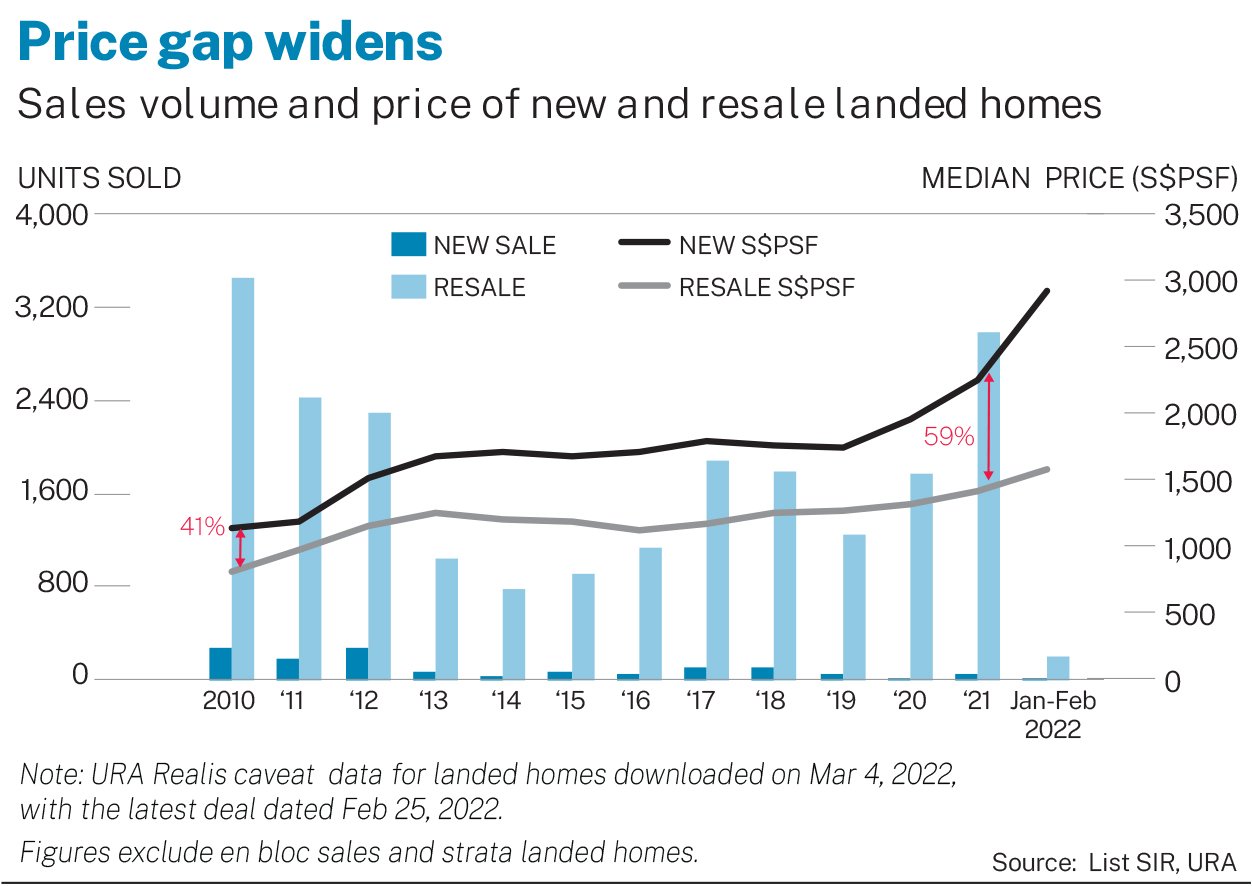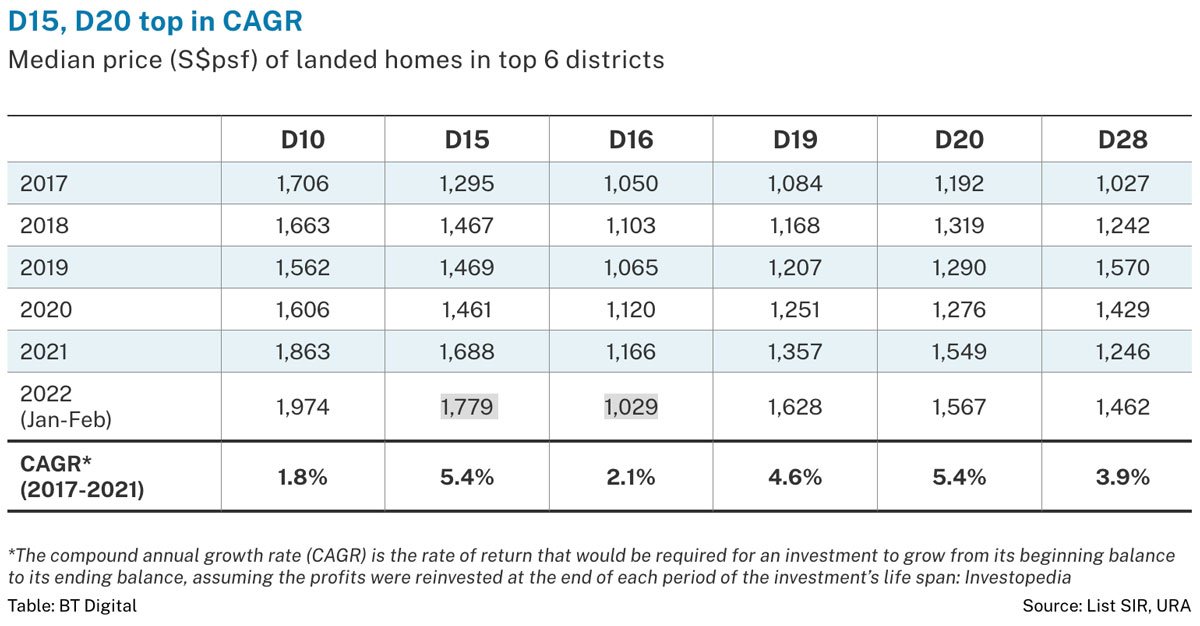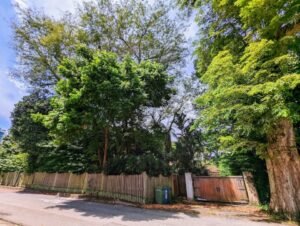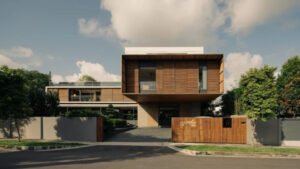IN a densely populated nation city like Singapore, some 80 per cent of its resident population live in public housing while the remaining 20 per cent live in private housing.
Based on the latest report by the Housing and Development Board, there were slightly over 1 million flats in the public housing stock. Within the private housing domain, there are different housing types to cater to the different needs and aspirations of those who are able to afford them.
As at end-2021, there were 382,195 homes in the private housing stock. This number comprises 308,933 (81 per cent) non-landed properties (apartments and condominiums) and 73,262 (19 per cent) landed properties. Taken as a whole, landed properties made up only 5 per cent of the entire housing stock in Singapore, making them a scarce and valuable class of housing type.
Broadly speaking, there are 3 types of landed properties in Singapore: detached houses, semi-detached houses and terrace houses. Special properties like Good Class Bungalows (GCBs) are a superior form of detached houses and shophouses (conservation and non-conservation) for residential use are classified as terrace houses.
According to the Urban Redevelopment Authority’s Q4 2021 statistics, there were 10,849 detached houses, 22,276 semi-detached houses and 40,137 terrace houses.
Strata landed housing are strata-titled detached, semi-detached and terrace houses occupying a common development site with shared communal facilities and a single vehicular access point. The key difference between a landed and strata landed property is the land ownership.
For a landed property, the plot of land that the house sits on belongs to the owner, who is free to renovate or rebuild the property. For a strata landed property, the land is jointly owned by all the homeowners in the same development.
They also share in the monthly maintenance of the facilities and services therein. As the number of strata landed houses is very small, they are included in the landed stock.
This article will focus on landed properties alone.
2021: A notable year for the landed homes market
The landed homes market was a shining star in 2021. URA data shows that a total of 3,023 landed homes were sold, 67 per cent higher than the 1,807 homes sold in 2020.
Last year also recorded the highest sales volume since 2010 when 3,729 landed homes were sold. For a year when the Singapore economy was still reeling from the impact of the Covid-19 pandemic, the landed market in 2021 beat all expectations by turning in the best sales volume in 11 years.
This could be attributed to the build-up on the need for more living space from the Circuit Breaker in April-June 2020 due to the mandate to work from home and the implementation of home-based learning for students. Those who could afford it decided to swop their smaller homes for landed properties.
Based on URA caveat data, the median price per square foot (psf) of all landed home sales rose by 8.0 per cent year-on-year (y-o-y) in 2021, compared with the 1.9 per cent y-o-y growth in 2020. This was contributed by new landed home prices which surged by 14.8 per cent y-o-y to S$2,247 psf while resale landed prices grew by 7.6 per cent to S$1,414 psf.

Over the 2010-2021 period, the price of new landed homes nearly doubled from S$1,146 psf in 2010 to S$2,247 psf in 2021 while the price of resale landed homes grew by 74 per cent from S$811 psf to S$1,414 psf. This in turn translated to a gap of 41 per cent between new and resale landed home prices in 2010 which widened to 59 per cent in 2021.
The price gap widened significantly during the pandemic period of 2020-2021 mainly because the limited supply of new landed homes fell short of the strong demand. This, coupled with the shortage of labour and rising construction costs due to supply-chain disruptions, resulted in a steep rise in the prices of new landed homes.
In the first 2 months of 2022, there were 204 transactions of landed homes (new and resale deals combined). A new project, Belgravia Ace, was launched in January and 74 units were sold, all in the same month, according to URA data as of Mar 23.
Although the 204 transactions were much lower than the 454 transactions in January-February 2021, it could be attributed to buyers taking a step back to monitor the market following the latest cooling measures effective Dec 16, 2021. We understand that viewing activity has picked up since mid-February.
Top performing districts
Over the 5 years from 2017 to 2021, the top 6 districts with the highest number of transactions were districts 10 (Bukit Timah, Holland Road), 15 (Katong, Siglap), 16 (Bedok, Upper Changi), 19 (Hougang, Serangoon Garden), 20 (Ang Mo Kio, Upper Thomson) and 28 (Seletar, Yio Chu Kang). Except for District 28, the other 5 districts showed a significant increase in sales volume in 2021 over 2020.

District 19 was a clear winner with 532 transactions in 2021, 63 per cent above the volume in 2020. District 15’s 382 sales was a 68 per cent increase from 227 units in 2020. Next comes District 10’s 255 sales which was 90 per cent above the 134 sales in 2020, followed by 236 transactions in District 16 reflecting an 81 per cent y-o-y increase and 203 sales in District 20, which was 73 per cent higher than the 117 units sold in 2020.
These 6 districts continued to lead for the transactions in January-February of 2022.
The strong sales volumes were mainly due to the large stock of landed homes found in these locations. Among them, District 19 has the biggest stock of 11,593 landed properties, followed by 9,500 in District 15, 6,905 in District 10, and over 5,100 homes in each of districts 16, 20 and 28.
Likely shifts in buying Likely shifts in buying
Supported by robust sales, prices of landed properties in these 6 districts showed a healthy compound annual growth rate (CAGR) or average yearly growth rate in the 2017-2021 period.
The highest CAGR of 5.4 per cent was registered for districts 15 and 20. Districts 19 and 28 followed with a CAGR of 4.6 per cent and 3.9 per cent respectively. Prices in these 4 districts got a lift from the occasional launch of new landed projects.

Prices in District 16 grew by a modest 2.1 per cent annually. This is interesting because while District 16 is a popular location, its price appreciation tends to lag behind that of District 15.
District 10, notwithstanding its smallest annual growth of 1.8 per cent, remains the priciest district where some of the most expensive landed properties were transacted.
Against the backdrop of the latest cooling measures: tightening the total debt servicing ratio while raising additional buyer’s stamp duties for those acquiring their second and subsequent residential properties, we expect home buyers to “rightsize” their expectations.
For one, buyers who are priced out of landed homes in District 10, might turn their focus to neighbouring locales such as District 11 (Newton, Dunearn), District 21 (further down Dunearn Road, Toh Tuck) and District 23 (Hillview, Upper Bukit Timah).
Likewise, those looking at homes in District 15 might now consider District 16, and those who once desired homes in District 20 might choose districts 19, 28 and 26 (Springleaf, Upper Thomson).
Another possible change in behaviour could be switching from a detached to a semi-detached house, or from a semi-detached to a corner terrace house in order to fit their budget.
For that matter, 99-year resale landed homes have become increasingly popular as they are relatively cheaper than freehold ones. Last year, 468 resale landed homes with 99-year leasehold tenure were sold, up 61 per cent from 291 units in 2020.
On the supply side, there have been no new sites for landed homes sold by the government since the sale of Lorong 1 Realty Park (nka Parkwood Collection) in 2017. Pollen Collection in District 28, a 99-year leasehold project with 132 landed homes, is an upcoming new launch to watch out for.
Besides the landbanks of 1 or 2 major developers, most of the new landed homes sold in 2020-21 were piecemeal developments built on sites where the old houses had been demolished. This lack of new supply will continue in 2022 and buyers must be prepared to pay more for the higher costs of labour and materials. The supply of resale landed homes is also expected to be reduced after the strong buying in 2021.
Outlook
- The landed homes in prime locations and new landed homes will drive price appreciation.
- Some demand from the popular districts 10, 15 and 20 is expected to shift to the neighbouring districts.
- Demand for landed homes will be supported by the ongoing migration from public housing or condominium to landed properties. These are people who buy for occupation and are less affected by the latest cooling measures. They will be attracted to intermediate terrace houses because of the lower entry level, with a preference for locations near MRT stations for the ease of commuting. The completion of Thomson-East Coast Line will drive demand along its route, specifically in districts 15 and 16.
- The 2-step hike in property tax in 2023-2024 is unlikely to affect those who are buying for owner occupation or existing owners holding large landed properties for investment because these people generally take a longer-term view on property investment, focusing on the long-term yields, wealth preservation and potential for capital growth.
- Due to the cooling measures and lack of supply, the landed housing sales volume in 2022 will not be as high as in 2021, but prices are most likely to stay firm and possibly trend upwards.
source: The Business Times




